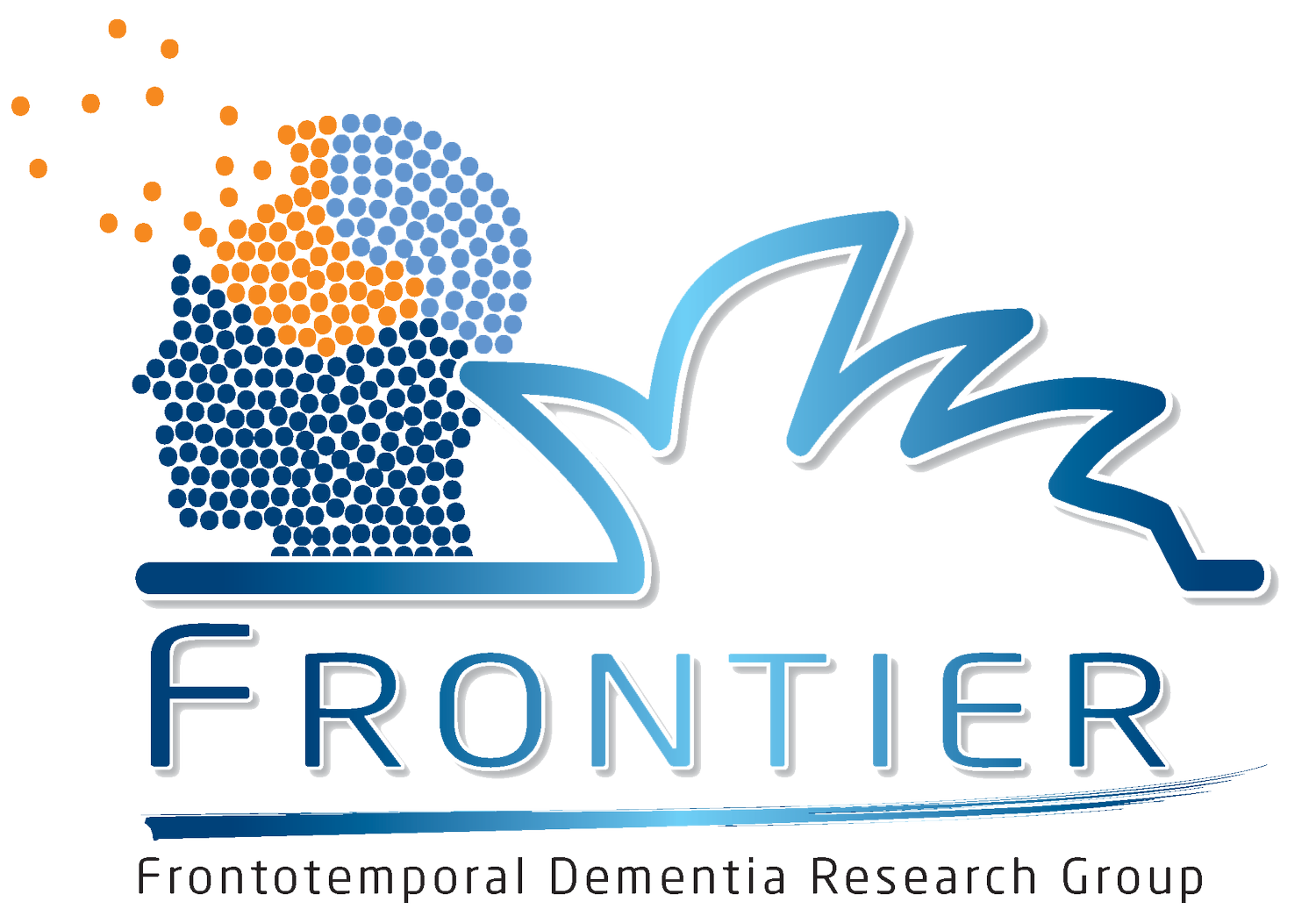Pathology
Frontotemporal dementia (FTD) is caused by the abnormal accumulation of proteins in the brain. In over 90% of cases, the proteins involved are either tau or TDP-43. Less commonly, another protein called FUS may be involved. When these proteins build up in large amounts, they form clumps that disrupt the normal function of brain cells (neurons). Over time, this leads to neuron loss, brain shrinkage (atrophy), and the gradual appearance of symptoms.
These protein changes most often affect the frontal and temporal lobes, the regions of the brain responsible for language, behaviour, and movement. The damage spreads as the disease progresses, leading to worsening difficulties in everyday life.
Although the specific protein involved cannot yet be confirmed during life, researchers have identified typical patterns of pathology for different FTD syndromes:
Behavioural-variant FTD (bvFTD) can be caused by tau, TDP-43, or less commonly FUS.
Semantic dementia (SD) is almost always linked to a form of TDP-43 called type C.
Progressive nonfluent aphasia (PNFA) is most commonly associated with tau pathology.
Corticobasal syndrome (CBS) and progressive supranuclear palsy (PSP) are usually associated with tau pathology.
FTD with motor neuron disease (FTD-MND) is most often associated with TDP-43 pathology.
FTD syndromes and associated pathology are taken from Grossman, M., Seeley, W.W., Boxer, A.L. et al. Frontotemporal lobar degeneration. Nat Rev Dis Primers 9, 40 (2023). https://doi.org/10.1038/s41572-023-00447-0
The accumulation of these proteins generally begins 10 to 15 years before symptoms appear, although the exact reasons for this are not fully understood. In most cases, the cause is unknown. However, in 20-30% of individuals with FTD, changes in certain genes have been found to cause the disease. These cases are called genetic or familial FTD because they can be passed down through families. For more information on genetics, see the Genetics section.
Brain cell (neuron) degeneration
How is pathology identified?
The most accurate way to confirm the type of protein involved is through brain donation after death. This process allows scientists to examine the brain tissue under a microscope and identify the specific protein changes, which can help improve diagnosis, research, and support for families.
Although brain donation remains the gold standard, new techniques are now available that can detect the presence of protein changes during life. These include:
Brain imaging (such as PET scans): radioactive tracers are being developed that will bind specifically to the protein(s) of interest (tau or TDP-43) and will identify the sites of abnormal accumulation of these proteins
Fluid biomarkers: these tests measure the presence of the relevant protein(s) in the spinal fluid or in the blood that would indicate the presence of abnormal protein build-up in the brain.
These newer techniques are still being validated and are not yet widely available. However, they hold promise for earlier and more accurate diagnosis in the future.
Why does pathology matter
Understanding which proteins are causing the disease is becoming increasingly important as new treatments are developed. In the future, knowing the underlying pathology will help ensure that the right individuals receive the right medication at the right time.




